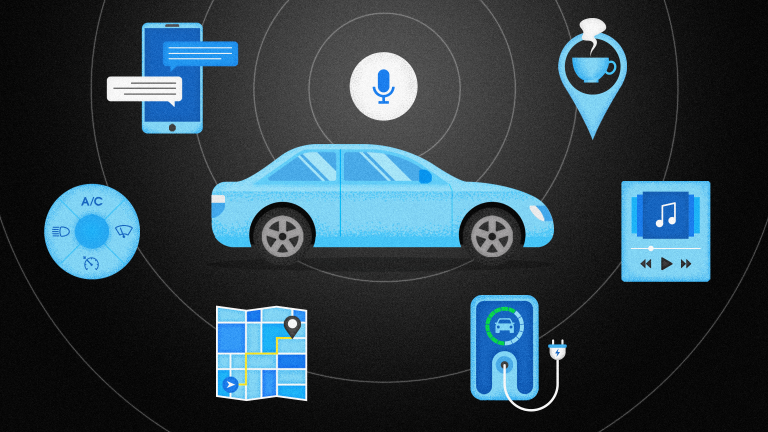Embedded functionality can access the popular use case of cabin controls—rolling up and down windows, turning on and off the radio, navigation, turning on and off seat warmers, turning up and down the volume, calling, texting, and other actions that would normally be selected through buttons on the dashboard. With embedded voice AI, drivers and passengers control the cockpit of the car as well as complete a finite number of other tasks quickly, conveniently, and hands-free.
Solutions that are cloud-only also provide access to in-car functionality, while opening the door to many other experiences, such as accessing playlists on streaming services, finding nearby POIs, purchasing opportunities, searching for information from the web—such as stock prices. Cloud solutions hold the promise of cars becoming part of the IoT. By connecting with smart home technology and giving drivers and passengers the convenience of turning on their home a/c or heater, opening or closing blinds, preheating the oven, or opening the garage door when away from home, our cars become an extension of our homes and a vehicle with greater efficiency and convenience.
Hybrid connectivity options deliver the best of both worlds, giving drivers access to the cloud while still delivering a wide range of functionality and navigation when the cloud is unavailable or the signal is weak. Advancing technology is making it possible for car manufacturers to choose one provider for both the embedded and cloud solutions. Arbitration technology makes those connections faster and more accurate when the signal is sent to the cloud and embedded systems simultaneously and returns the best answer without waiting for a response from the first one and then the other.
Future trends of in-car voice assistants
The recent Voicebot.ai study has revealed 3 major trends in voice assistant technology for in-car use cases:
- Services integration
- Personalization
- Continuity
Services integration includes aspects such as automated payments, gas station location, and food and drink orders. This could also open the door for monetization and voice commerce opportunities by providing unintrusive ads that are helpful and meaningful for the consumer, such as suggesting a nearby gas station if low on gas or a parking garage when arriving at a destination.
Personalization can take into account the driver’s past search history and preferences to customize an experience that is unique to them. This could help in searching for gas stations and restaurants, curating music or radio stations, and ordering food and drinks.








